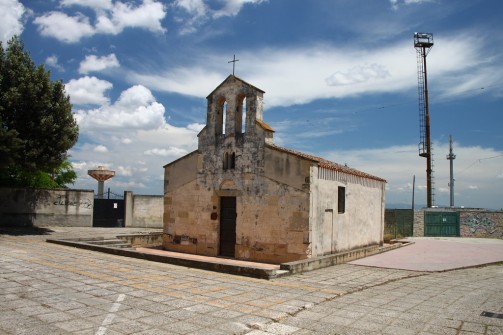The Romanesque church of St. George can be traced back to the “ecclesiam S. Georgii de Decimo” mentioned in a document dated 1089, by which Constantine, Judge of Cagliari, confirmed the donation of the building to the Benedictine monks of St. Victor of Marseilles. The antiquity of the church was endorsed by excavation work in 1989 that uncovered fragments of a Roman mosaic, a baptismal font, and the base ashlars of the semicircular apse. These interrelated elements made it possible to hypothesize a baptismal church, in a rural setting, attributable to the 6th century. In Romanesque and late Gothic times the building as we see it today was outlined. The semicircular apse was replaced by a rectangular space, and the late Gothic chapel was built in the northern nave. Recalling stylistic features of the Victorian monks is the facade with an architraved portal, surmounted by a round arch and overhanging mullioned window divided by a basalt column. On the slopes rises the two-light bell gable tower. Inside the church is a statue of St. George on horseback (17th cent.) and the late Gothic retable, kept in the back wall, within an aedicule. It is a double triptych framed by the polvaroli, with predella below divided into seven compartments. In the upper middle compartment the Crucifixion is depicted, in the lower compartment the adoration of the Magi. The side compartments depict St. Ephisius (?) and St. Potitus (?) at the top, St. George the Knight and St. Michael the Archangel at the bottom. In the predella the four Evangelists, Our Lady, Archangel Gabriel, and in the center the Eucharist.









